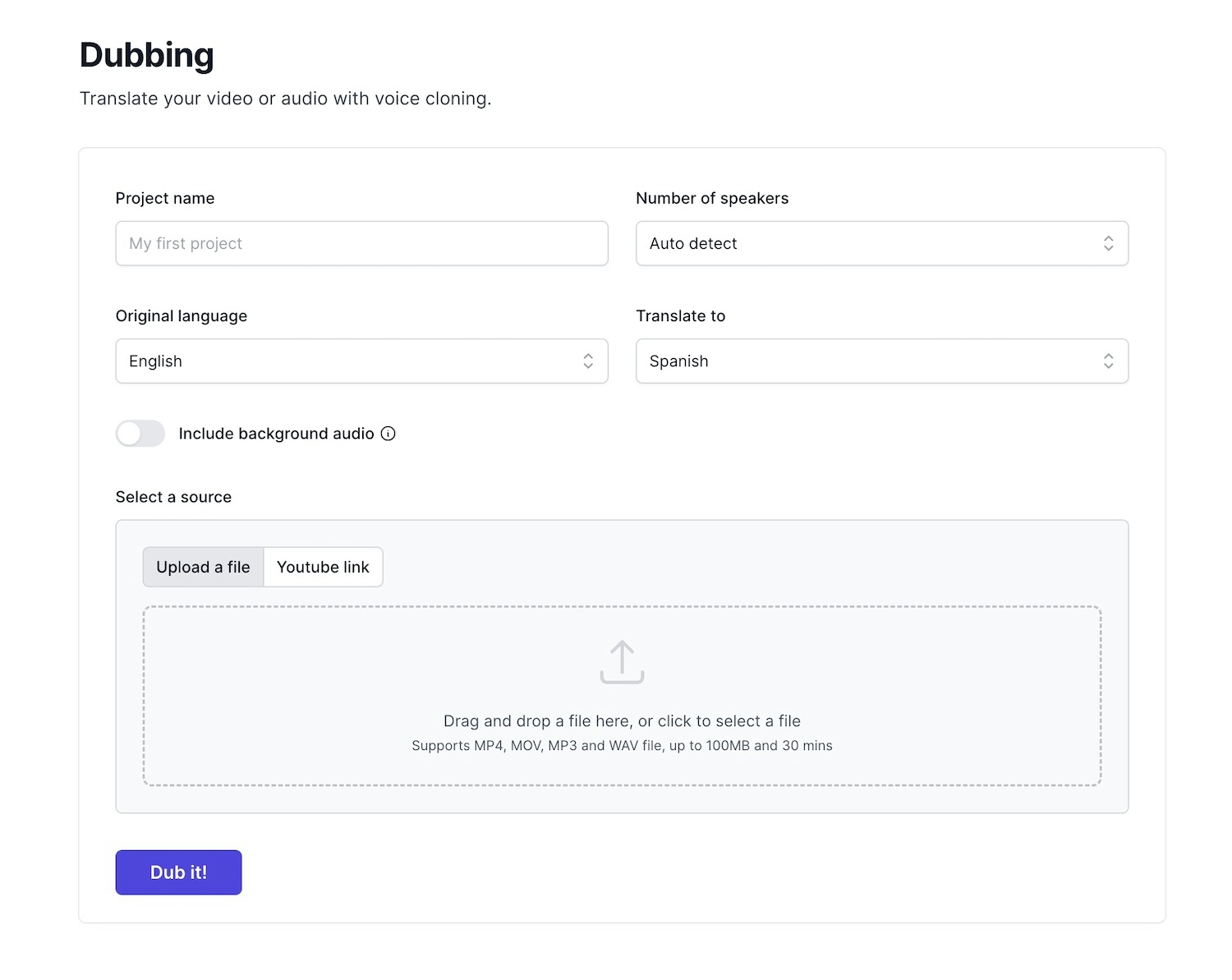English to Cantonese Video Converter
Break language barriers and reach a wider audience with our English to Cantonese video converter, allowing you to tap into the vast Chinese-speaking market and connect with millions of potential customers.
- 🇭🇰Preserve Cultural Nuances
Cantonese is a tonal language, and subtitles or dubbing in English may not accurately convey the emotional depth and cultural references unique to Cantonese. A video converter ensures that the original tone and intent are preserved.
- 🗣️Accommodate Dialectal Differences
Cantonese has various dialects and regional variations, and a video converter can help tailor content to specific audiences. For instance, converting English videos to Cantonese for Hong Kong, Macau, or Guangdong province audiences.
- 📚Enhance Learning and Accessibility
For language learners, a Cantonese video converter can provide an immersive experience, allowing them to learn the language in context. Additionally, it can make English content more accessible to Cantonese-speaking individuals with limited English proficiency.
Everything you need to dub your content
Dub your content with AI-powered translation, voice cloning, text-to-speech and much more at your fingertips.
- Translate content to 30+ languages
- Translate and dub your content and reach a global audience with ease.
- Multi-speaker support
- Support up to 10 speakers at once with automatic speaker detection.
- Voice clone
- Cloning any voice and maintaining brand identity across diverse markets.
- Transcript, subtitles and audio source files
- Access to translated transcript, subtitle and audio source files for your custom editing needs.
Tip tips on choosing the best English to Cantonese Video Converter
Selecting the right tool ensures accurate translation, high-quality output, and maximum audience engagement and understanding.
- For Cantonese, it's essential to specify the correct tone for each character, as Cantonese has a complex tone system. Make sure to input the tone marks accurately to ensure the correct pronunciation.
- When converting English to Cantonese, be mindful of the word order. Cantonese typically uses a subject-verb-object word order, whereas English often uses a subject-object-verb order. Adjust the sentence structure accordingly to achieve a more natural flow.
- Cantonese has a rich vocabulary, and some words may have multiple characters with similar meanings. For example, 'to eat' can be translated to (sīk) or (chī). Choose the correct character based on the context to ensure accuracy.
- Pay attention to honorifics and polite language in Cantonese. Using the correct honorifics (e.g.,) can make a significant difference in conveying respect and politeness, especially in formal or professional settings.
- Cantonese has many idiomatic expressions and colloquialisms that don't have direct English translations. Be prepared to adapt or rephrase these expressions to convey the same meaning and cultural nuances in Cantonese.
Dub your video with 3 easy steps.
Create high-quality dubbed audio or video in a few clicks.
- 1. Upload fileEasily upload audio and video file or enter a YouTube url to start.
- 2. Instant dubbingLet AI translate and dub your content to the desired language.
- 3. Download assetsDownload transcripts, audio clips and final dubbed audio or video file.

Loved by creators worldwide.
Don't just take our word for it, see what our customers have to say!
I was needing to translate audio with a natural sounding speaker but it was hard to find a good AI program that didn't sound like a robot. Dub AI sounds extremely natural!
Konaruhi
The voice clone is unbelievable. My audience actually thought it was me speaking Japanese in the video.
Viktor H.
Oh wow. My feedback is good!!! That was a noisy recording that the person made driving a car with a standard shift. It came out really clear. Really!!
Peggy G.
I'd like to say that I've tried a lot of AI dubbing software and yours is CLEARLY the best. Yours is doing exactly what I want, simple and quick.
@gumytutoriels
Amazing product! It has saved us so much time to translate our marketing videos to different languages.
Tom R.
I have many friends who speak Chinese. I run a youtube channel giving philosophy lectures in English. My friends have been asking me to translate my videos into Chinese so they can enjoy them as well. Dub AI was the perfect tool for this purpose!
@TranscendentPhilosophy
